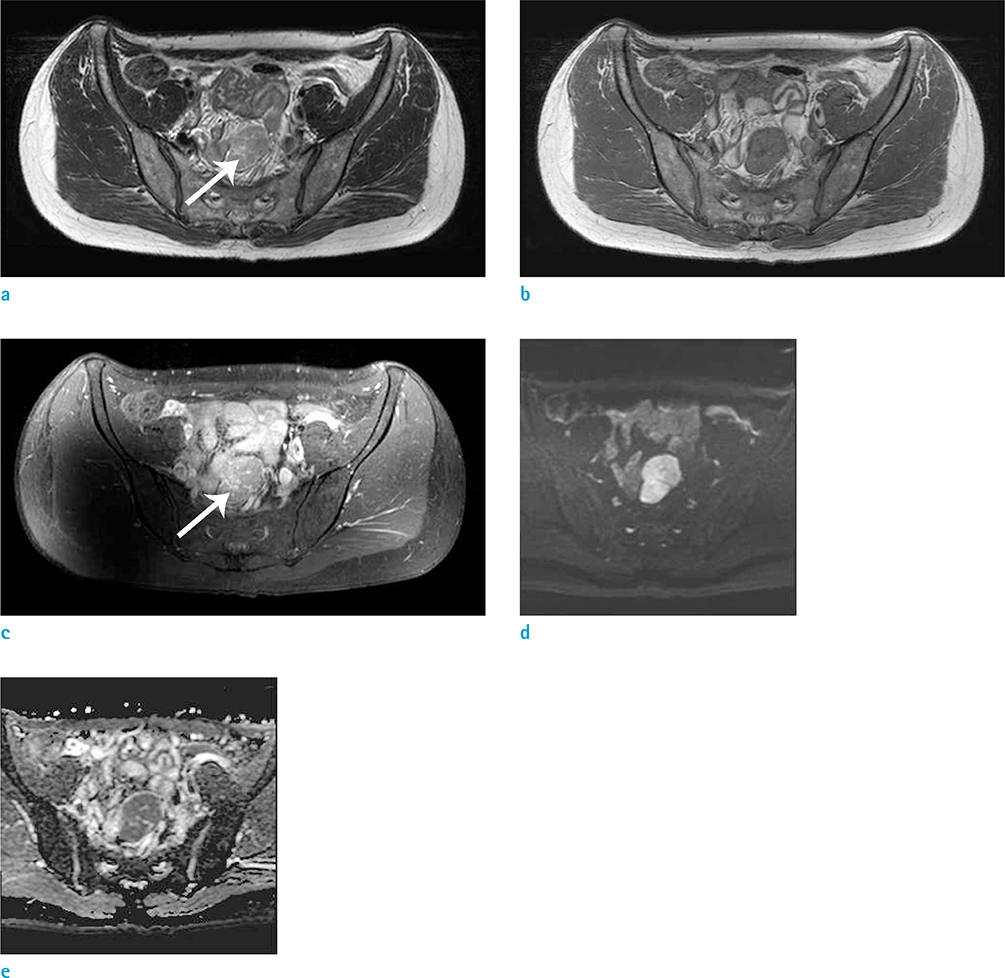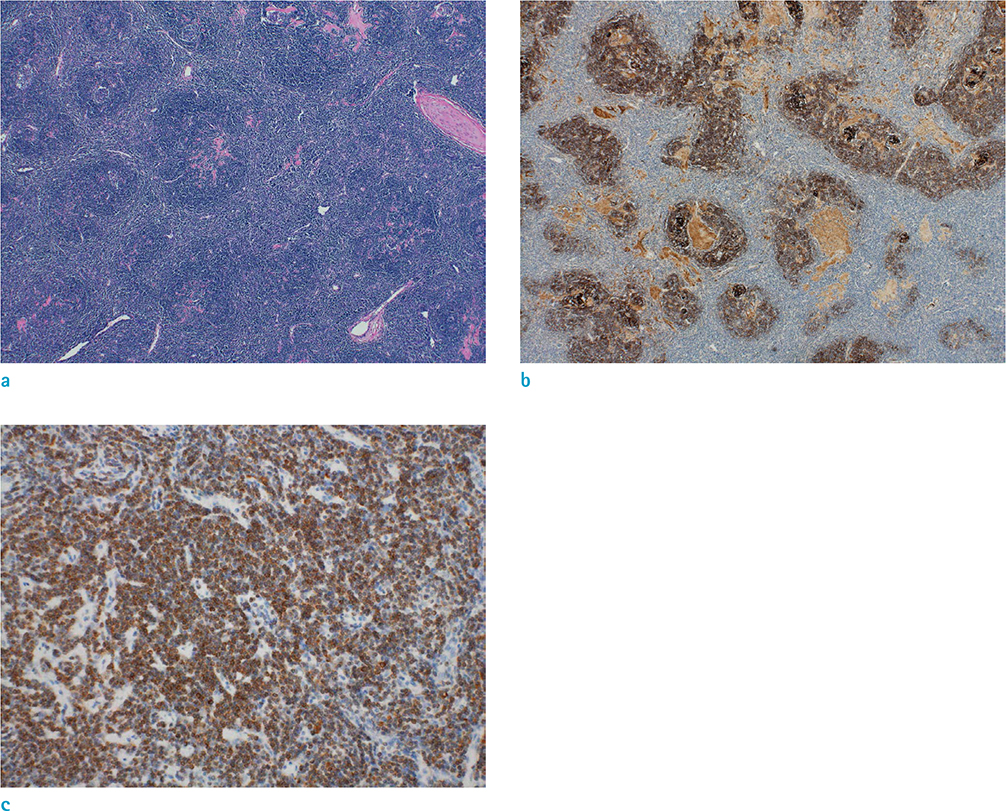Investig Magn Reson Imaging.
2017 Mar;21(1):56-60. 10.13104/imri.2017.21.1.56.
Progressive Transformation of Germinal Centers in Presacral Space: MRI Findings and Literature Review
- Affiliations
-
- 1Department of Radiology, Anam Hospital, Korea University College of Medicine, Seoul, Korea. urorad@korea.ac.kr
- 2Department of Pathology, Anam Hospital, Korea University College of Medicine, Seoul, Korea.
- KMID: 2376271
- DOI: http://doi.org/10.13104/imri.2017.21.1.56
Abstract
- Progressive transformation of germinal centers (PTGC) is an atypical feature seen in lymph nodes with unknown pathogenesis. PTGC most commonly presents in adolescent and young adult males as solitary painless lymphadenopathy with various durations. Cervical nodes are the most commonly involved ones while involvements of axillary and inguinal nodes are less frequent. PTGC develops extremely rarely in other locations. We report a rare case of solitary mass present in the presacral space. The mass as subsequently proven to be PTGC. To the best of our knowledge, PTGC in the presacral space has not been previously reported in the literature.
MeSH Terms
Figure
Reference
-
1. Lennert K, Muller-Hermelink HK. Lymphocytes and their functional forms - morphology, organization and immunologic significance. Verh Anat Ges. 1975; 69:19–62.2. Leong A. A pattern approach to lymph node diagnosis. New York: Springer;2011.3. Hicks J, Flaitz C. Progressive transformation of germinal centers: review of histopathologic and clinical features. Int J Pediatr Otorhinolaryngol. 2002; 65:195–202.4. Park SW, Jang SM, Kim DY, Son JH, Cho YC, Sung IY. Progressive transformation of germinal centers in submandibular area. J Korean Assoc Maxillofac Plast Reconstr Surg. 2011; 33:368–372.5. Miller MW, Gatter KM, Cannady SB, Wax MK. Progressive transformation of germinal centers (PTGC) in the head and neck. Laryngoscope. 2010; 120:Suppl 4. S168.6. Chang CA, Kumar B, Nandurkar D. A case report of high 18F-FDG PET/CT uptake in progressive transformation of the germinal centers. Medicine (Baltimore). 2015; 94:e412.7. Hain KS, Pickhardt PJ, Lubner MG, Menias CO, Bhalla S. Presacral masses: multimodality imaging of a multidisciplinary space. Radiographics. 2013; 33:1145–1167.8. Bonekamp D, Horton KM, Hruban RH, Fishman EK. Castleman disease: the great mimic. Radiographics. 2011; 31:1793–1807.9. Pickhardt PJ, Bhalla S. Unusual nonneoplastic peritoneal and subperitoneal conditions: CT findings. Radiographics. 2005; 25:719–730.
- Full Text Links
- Actions
-
Cited
- CITED
-
- Close
- Share
- Similar articles
-
- Progressive Transformation of Germinal Centers in Axillary Lymph Nodes Mimicking Metastatic Lymphadenopathy after Breast Cancer Surgery: A Case Report
- Progressive Transformation of Germinal Centers in Submandibular Area: Case Report
- A Case of Presacral Cystic Teratoma
- Laparoscopic Resection of Presacral Tumor: A New Approach in the Era of the Minimally Invasive Surgery
- Clinical Course of Myasthenic Patients after Thymectomy and Relationship between Germinal Center and Postoperative Course




